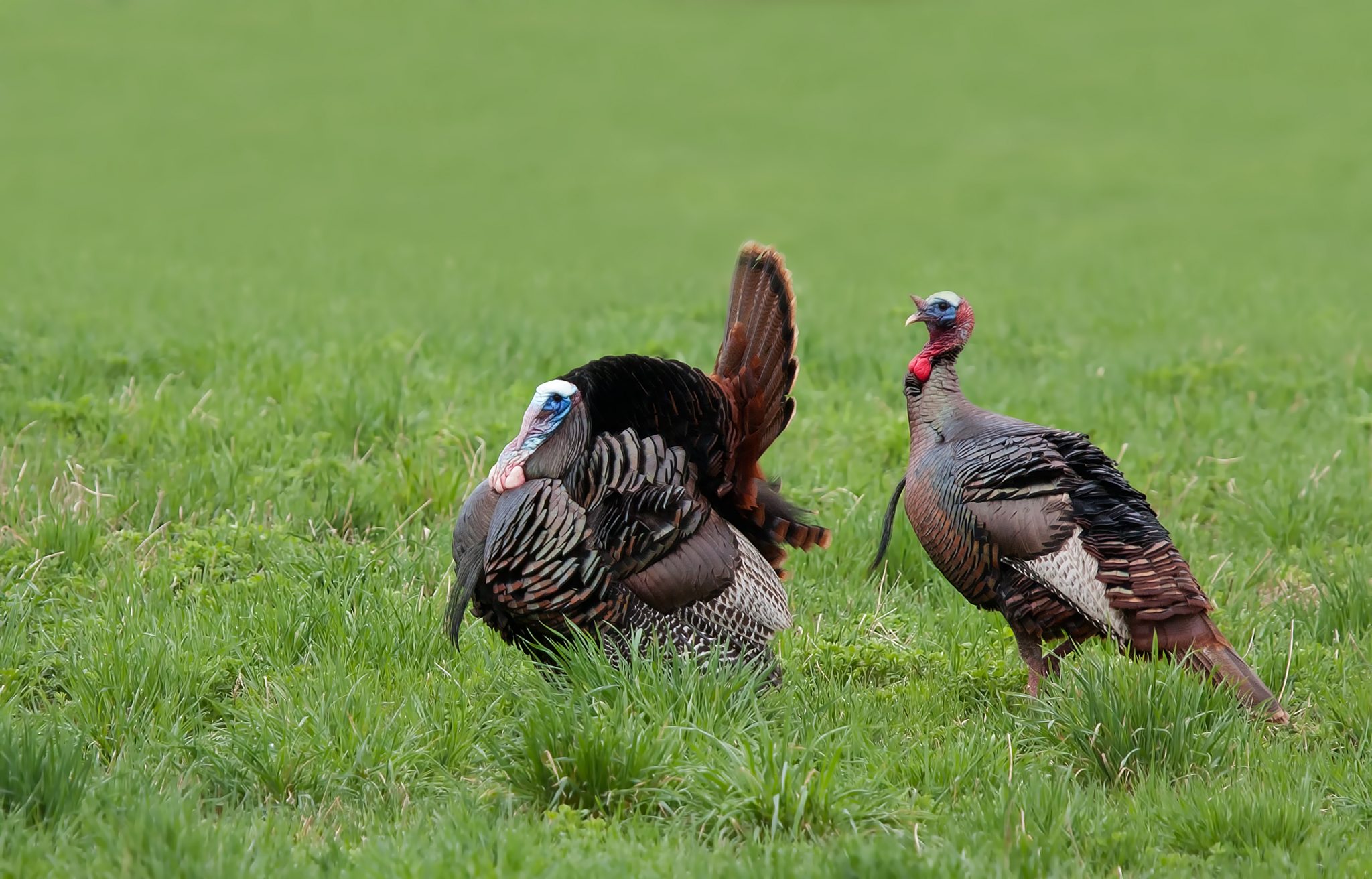Forestry & Wildlife

Chufa (Cyperus sp.) is a productive, perennial sedge planted widely as a supplemental fall and winter food for wild turkeys. Although native to Africa and southern Europe, chufa is broadly adapted to cultivation in all regions of Alabama.
Chufa grows rapidly and produces a yellowish main stem more than 2 feet long. Bright green leaves surround the base of the three-angled stem. Turkeys and other animals eat the mature tubers (1⁄4 to 1⁄2 inches long) that are produced at the ends of long, slender rhizomes. The tubers provide a digestible source of protein (8 percent) and fat (21 percent).
Seed production requires unusual climatic conditions that rarely occur in Alabama. So reproduction is mostly from edible tubers. Tubers may be dug, stored, and planted the following year, but small-scale collection is usually not cost effective.
Tubers are available commercially from most wholesale seed companies that specialize in wildlife food plants. Prices run $1.50 to $2.50 per pound but vary according to availability.
Plot Selection
Chufa is adapted to a wide range of soil types, but it is best produced for turkey food on moist silty, loamy, and sandy soils. Production is adequate on clay sites, but turkeys have a hard time scratching tubers from heavy clays. Slightly acid to neutral soils (pH 5.0 to 7.5) of fine texture and high moisture are best for growth.
Select fallow land for chufa plots. Chufa competes poorly with grasses and weeds on recently cultivated sites. Forest clearings such as log landings or wide, abandoned logging roads that receive full sunlight are excellent locations for chufa plots. Chufa planted on recently cultivated land should be drilled in rows and cultivated to control weeds.
Plot Size
Plots of 1 to 5 acres are needed where wild turkey populations are high. Chufa tubers in plots of less than 1 acre are depleted rapidly, particularly during years of poor acorn (mast) production.
The number of plots needed and their distribution may vary widely according to population levels of turkeys and other animals, location of plots, habitat types and characteristics, and mast production. Usually, 1 acre of chufa per 100 acres of habitat provides sufficient production of tubers for wild turkeys.
Establishment
Time of Planting. Plant chufa during late spring or early summer, after all danger of frost is past and soils are getting warmer. Best dates for planting in Alabama are from May 15 to July 10.
Soil Preparation. Soils for chufa plots should be tested well in advance of planting. Disk plots thoroughly and lime and fertilize according to soil test recommendations.
Methods of Planting. Chufa plots are established by broadcasting tubers or by row planting. Broadcasting works well on finely textured, uncultivated land but requires greater planting rates. Row planting takes fewer tubers to establish a plot and lets you cultivate if grass weeds occur. Nuisance animals can more easily get to rows of chufa, however.
Broadcast evenly, distributing 30 to 40 pounds of tubers per acre on a well-prepared seedbed. Lightly disk over scattered tubers, covering them with 1⁄2-inch of soil.
Row plant 20 pounds of tubers per acre in rows 36 to 42 inches apart.
You can expect best tuber production from soil fertilized according to soil test recommendations. If soil is not tested, apply 300 to 400 pounds of balanced fertilizer per acre and side or top dress with about 100 pounds of ammonium nitrate per acre when plants are 8 to 12 inches high.
Maintenance
Protect chufa plots from cattle grazing and compaction. Deer, hogs, raccoons, and squirrels often dig up seedlings and immature tubers. If this occurs during growing, scarecrows or other fright devices may reduce damage.
Chufa production can be extended each year by disking and fertilizing during spring the previous year’s plots, but best yields come from freshly reseeded sites. After 2 to 3 years on the same site, weeds and insect damage will reduce yields. Original plots should then be left fallow several years while new plots are established elsewhere.
Chufa is very susceptible to a wide range of herbicides. Before attempting to control pests with chemicals, consult with your county Extension agent.
Turkeys’ Use of Chufa
Turkeys’ use of chufa plots is influenced by factors such as seasons, habitat characteristics, and the number of plots and their distribution. At first, turkeys may ignore chufa just because it is an unfamiliar food crop. If they don’t eat tubers during the first fall after planting, pull up several scattered plants to expose tubers buried in the soil. As turkeys discover the new food and as acorns become less available, use of chufa will increase.

